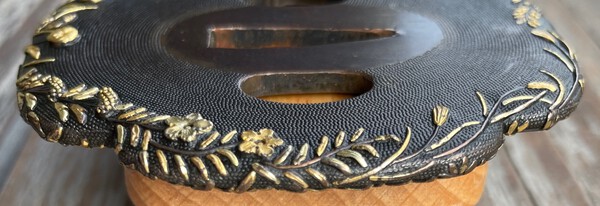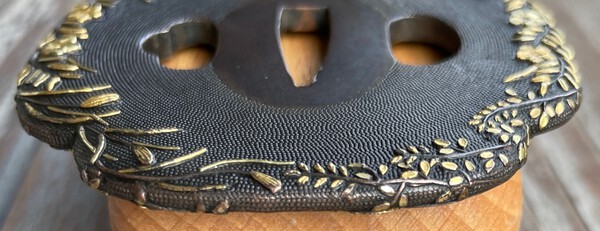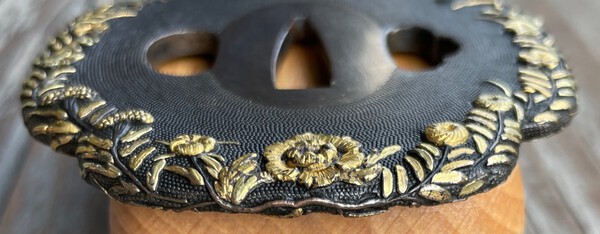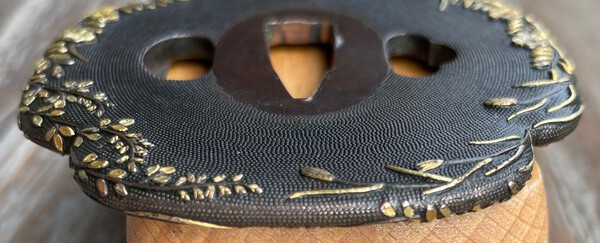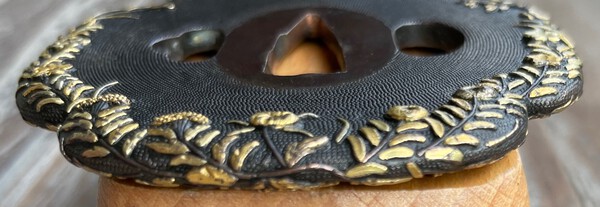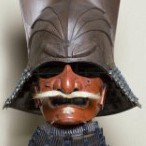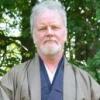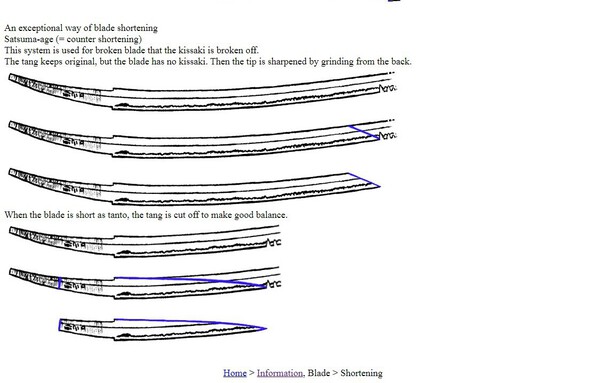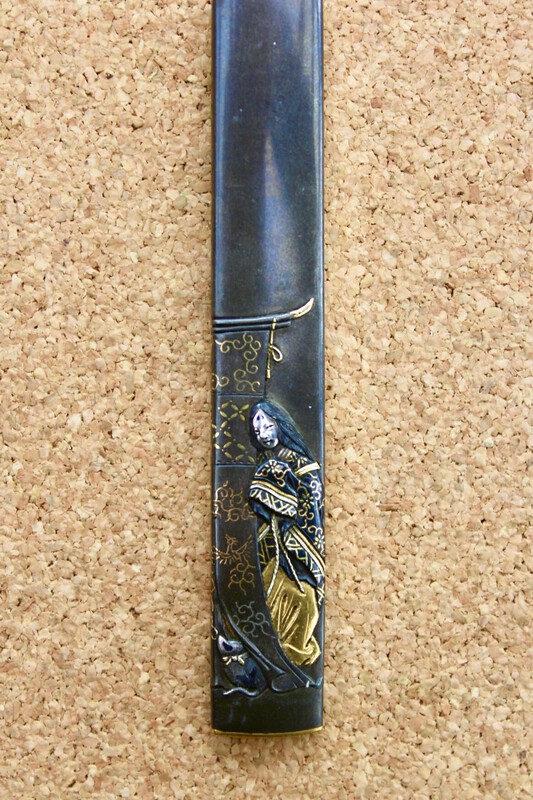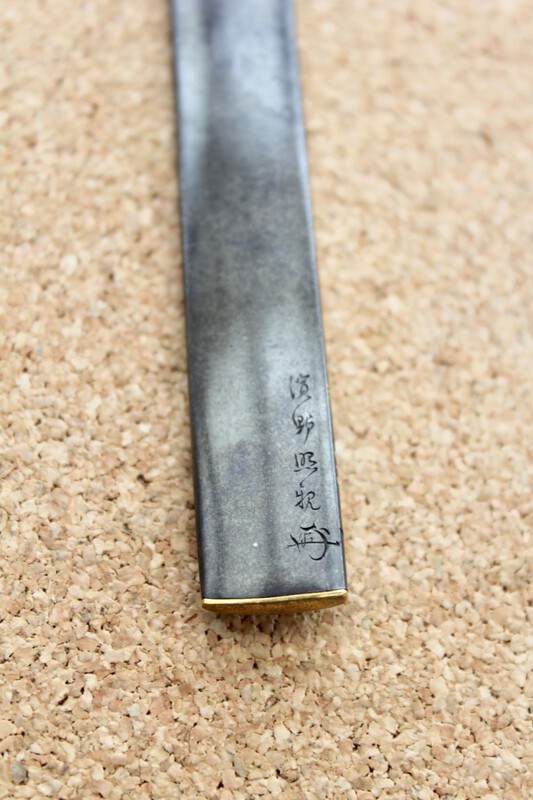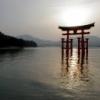Leaderboard
Popular Content
Showing content with the highest reputation on 10/31/2022 in all areas
-
久勝作之 – Hisakatsu made this. 昭和十一丙子歳八月日 – Showa 11th Hinoe-Ne year (1936), 8th month 天久美神劔 - 天久美-A divine sword 神劔 – divine sword 劔銘 天久美 ト號ス – Sword’s name: It is named 天久美 (reading?). 石城山麓ノ齋域ニ於テ鍛冶竹島久勝 – At the holy ground of the foot of Mt. Iwaki, sword smith Takeshima Hisakatsu. 昭和十一年十月十一日 – Showa 11th year, 10th month, 11th day 齋火結凝ニ依リテ拝戴ス – It was given through 齋火結凝 (unsure: something like Shinto rites?) 神族・・・・誌(wrote) – (unsure)4 points
-
Sorry, but you are totally wrong Jimmy. Read what was writing Darcy Brockbank about Yamato swords: Quote: « I do have everything digital now and have been working on a project with about 5,000 hours in now. Markus has access to my project as he's been doing some contributions. So when stuff is fact it's very easy for both of us to confirm this. Studying the Juyo blades is just studying the best published discoveries of the last 60 years. Looking at them all is like having the eagle's perspective when everyone else is thrashing around in the mud. Ultimately being able to check them is what verifies a blade like your tanto is so rare and precious. Any signed Yamato work of Nanbokucho and earlier has to be held as particularly important as there are 318 that I've counted. This is including quasi-Yamato stuff like Mihara and Mino Senjuin etc. Also including things like Muromachi Yamato which is more commonly signed and not as important. I think with the five core schools the number is around 130 or 140. So when you have one you have something rare just on that basis. Anyone can find a nice blade. There are a lot of nice blades out there. Anyone can get a nice mumei Taema or mumei Yamato Shizu. There are many. But some blades are the items that we need in order to piece together the bigger picture. That's where things like this come in and those are the ones I try to get for my website when possible. Looking at the bigger picture and studying all the Juyo and Tokuju side by side further hammers home the point that there are Juyo blades and then there are a small sliver of these that stand apart for some reason. Because the average Western collector (and even Japanese collector) doesn't have this perspective they easily get lost in relativism, thinking that any two blades are equivalent because they have the same paper or so on. When you look at the numbers, there are more mumei Nagamitsu than there are signed Yamato blades from the 5 schools, Nanbokucho and earlier. Though Nagamitsu is held in high regard there is no way of knowing who made a Nagamitsu (they are all talented students but the point is that Nagamitsu is basically a brand name and the average westerner cannot tell the difference between the master's work and one of the students). we have the same problem with Rai Kunitoshi in that the NBTHK doesn't differentiate the various daimei works. If someone studies and takes the time as I've done then the six signatures stand out clearly. So we need to draw some conclusions from that. True master's work should be elevated a bit among the daimei. But it's up to you to know what you're looking at and why one Rai Kunitoshi may be more expensive than the other (or why it may be a good deal). Again with the two Kunitoshi you have about double the number of works in total as there are signed Yamato blades of Nanbokucho and earlier. I'm no huge fan of Yamato work on my own but there are standout blades and I think when one is signed it doesn't need anyone to stand up and have to write a lot about why it's special, it just is special on its own.»4 points
-
3 points
-
Just looked and 7 signed by Tegai smiths who worked during Ōei-bit later. There are Tegai smiths whose active period is spanning from late Nanbokuchō to early Muromachi so I left them in. And 6 signed Shikkake Norinaga blades that I assume are likely to be Muromachi period work (I cannot really identify their age properly but they are possibly by later generation). In overall I feel the most important Yamato smiths worked early Kamakura - Ōei, and there should be still 200+ signed ones for them. However to be noted there are lots of smiths who have very few signed works remaining. Then there are some like Tegai Kanenaga and Shikkake Norinaga from whom there are lots of signed items remaining. I liked the example by Okan. I feel the differences when attributing mumei stuff can be extremely small and different people tend to put certain traits to certain stuff. Shikkake - Tegai - Senjuin, etc. I feel just identification as Kamakura - Nanbokuchō Yamato work is good regardless of towards which the sword will be put. Of course the higher quality item it is, the easier it can be to see some of the identifying traits which made the experts choose one way or another.2 points
-
Sword No. 1 The crossguard is stamped in kanji with 神戸 [Kōbe]. The full name of the company is Kōbe (or Kanbe) Shop Unlimited Partnership 合名会社・神戸商店. I think the sword is prewar, as in it started life as a Type 94, and it is possible the entire sword could have been made by Kōbe including the blade. Later on, Kōbe was one of the manufacturers of the Type 95 Military Sword.2 points
-
It seems that this is already available for streaming? Please see below for the link. https://www3.nhk.or.jp/nhkworld/en/ondemand/video/4001416/2 points
-
2 points
-
I hope it fits the topic. This Tanto is from 1936 made by Hisakatsu. Takeshima Hisakatsu was from 1938 on of the smiths who directed the production of koa isshin blades. The nakago mune of this Tanto is round and has a diagonal stroke like the koa isshin mantetsu swords. I find this very interesting.2 points
-
2 points
-
Congratulations 👏 on this new addition to your family. Hoping you can hit gold with her. The name was translated by a Japanese person, using an older standard but different transliteration system which is not easy for Westerners to read. This would be how we would say it today. Yamanaka Tetsu-no-suké Kanétsugu Tsuda-Ryū was originally a school and style of gunnery born in the Wakayama Negoro-Ji Temple area just south-east of Ōsaka, tracing its roots back to the first arrival of guns in Tanegashima Island, Japan.2 points
-
1 point
-
Gents, I am pleased to offer a beautiful and flawless gendaito tachi made by the late Yasukuni shrine smith Osaki Yasumune in 1978. I purchased this great sword not long ago from Grey Doffin. Unfortunately I have to part with it, because off personal reasons. You can find the former listing on Grey‘s website. Here are the information about the sugata: Nagasa: 79,5cm Sori: 2,8cm Motohaba: 3,4cm Motokasane: 0,8cm Sakihaba: 2,1cm Sakikasane: 0,55cm Nakago Nagasa: 20,6cm Overall in Shirasaya: 110,5cm The mei reads: Chikuzen Ju Yasumune Saku. Showa Go Ju San Nen San Gatsu Hi ( a day in March 1978 ) Besides there is a soemei, that translate as: Owned by Masuiyama Daishiro. He was a sumo wrestler born in 1948, who achieved the second highest rank of Ouzeki. It is a long tradition in Sumo to offer fine swords to the stars of the sport. This Tachi is constructed in shinogi zukuri and has a strong koshi zori. It has a iore mune and also a chu kissaki. Both sides of the blade have a bohi. The hada of the sword is a fine, tight ko itame hada. The hamon is a suguba made of small choji gunome, nioi guchi with fine nie and subtle hataraki throughout. The boshi is a slightly swept o maru with a short kaeri. The Yasumune comes in a well made shirasaya and has a gold foil single habaki. The blade is flawless and has a quality Japanese polish. Although this sword was made long after WW2, it is made with the same characteristics as the swords made in the Yasukuni shrine during the war. The Tachi is in Germany, but I offer international shipping with DHL premium. My asking price is 3900€ obo.1 point
-
1 point
-
A few months ago I purchased another Tanegashima with great shooting provenance - I shoot a variety of BP muskets and rifles so wanted something with good history. The below pictured gun crossed my path so I purchased it. I've been speaking to Arthur Goetz on his Facebook page 'Japanses Matchlock Study Group' so some of the detail but thought it would be nice to post here to see what you Gents thought. Weight: 3.8kg Total length: 55" (139.7cm) Barrel Length: 41.5" (105.4cm) Bore: .509" I shoot it with a 10though patched .49" ball and 56 grns of Swiss 2...... It is a very accurate Teppo, winning many medals with its pervious owner - but I'm still getting to 'grips' with it so have only managed a few silver medals and a clutch of Bronzes. Translations from under the barrel: 二重巻張(niju-makibari=Double wrapped) 山中 鉄之助 金次 (Yamanaka Tetunosuke kanetugu =Gunsmith's name) 作(saku=made by) - Apparently the gunsmith is from Mino (in the Southern Gifu Prefecture). Arthur thinks this is gun made for 'Tsuda-ryu techniques' though to be honest I'm not sure what this means.... It does of course have a number of replacement parts such as the external main spring. Thoughts and comment appreciated!1 point
-
1 point
-
While not the topic of the thread I looked as I have that tachi in 5 different references but all seemed to have the same picture or oshigata. It is famous tachi designated Jūyō Bijutsuhin and I think named Hōjumaru 宝寿丸太刀. Hopefully I could some day see it at Musashi Mitake Jinja. I was able to find small pics that show sugata online. Here it is featured at Jinja site, you'll get good idea of the sugata: http://musashimitakejinja.jp/homotsu_multilingual/ja/kokushitsu_ja.html , and see small pic here http://park2.wakwak.com/~ome.net/24bunkazai0111.html I suppose it is almost always displayed with the large Hōju Ōdachi that is also owned by the Jinja.1 point
-
This is just an idea. But maybe the round mune with diagonal stroke is a trademark of Hisakatsu and when Wakabayashi Shigetsugu left the production, Hisakatsu could make better his influence on the Koa Isshin sword.1 point
-
1 point
-
Yes! That one might be my favorite book (still). It also includes a bunch of Hoju. And in my opinion, one of the most beautiful blades (but sadly does not have full sugata picture), plate 20 - know it by heart1 point
-
板桥(Banqiao)is a Subdistricts of 雨花台区 (YuHuaTai District )of 南京 ( Nanjing), the capital of 江苏(JiangSu province)。 https://en.wikipedia.org/wiki/Yuhuatai_District1 point
-
I am frankly puzzled what to say... Is it common for Tegai Kanenaga to have kissaki that long? It is a mistake or not to judge a bit midare hamon as Shikkake and not Tegai? What does it mean certified expert, today? There is government certification which certainly some have, but does it help when judging a particular blade? On Yamato signatures its like lumping everything in one bowl and arguing it tastes sour so the ingredients must be. Signed Hosho tanto can be acquired, signed Kamakura Senjuin were thought to be very rare, but there are a few which one can buy today at TH level and they are not going above that. Signed Taima is extraordinary rare, early Tegai is very rare (but they exist even at TH) and Shizu is precious. Signed Muromachi Mihara is very common. Signed Zenjo or similar stuff is pretty common.1 point
-
Should fill Your need .https://www.japaneseswordbooksandtsuba.com/store/books/b682-Japanese-master-swordsmiths-gassan-tradition Otherwise try Nihonto Koza or the Yamanaka Newsletter.1 point
-
1 point
-
1 point
-
I can attest to the incorrect interpretation of "tsuba" by the Japanese - I got some very strange looks from a few antique shop owners in Japan a few years back- I knew the word had several meanings including "brim" as in brim of a hat and as mentioned "Spit" or "Saliva" but I can always blame my Aussie accent for the "mistake" - "Have you any spit for sale?" would tend to raise a few eyebrows even here!1 point
-
1 point
-
It happens. If we poured a pint and raised a toast to every good NMB member we've lost here in the last 20 years, it would be a month long bender. Just smile and remember them well. They all gave us some enjoyment and some f@cking funny moments. --Save somberness for Monday.1 point
-
Curran, thank you. I have read Dr. Lissenden’s thesis about 4 or 5 times. He was the first “tsubaologist”. He was a brilliant individual (my opinion). Maybe the NMB should do something to honor his memory. I suddenly feel very somber. With respect, Dan1 point
-
Dan is correct. Dr. Lissenden passed. I enjoyed corresponding with him and that he had the heart to get his PhD so late in life. Now that I am back at a university, I am considering the same. Just to be clear: https://jitenon.com/word/13451 While I was half joking here, when conversing with someone in Japanese outside of this area: be careful.1 point
-
Hey, even more fun! Thanks, Curran, for the Japanese definition of “tsuba” . That is funny! Although I think the English-speaking public will have no problem defining “Tsubaologist” Oh well, whatever!! Onward to new thoughts! So, with the new “badge system” on this forum I believe the “highest rank” is that of “Grand Master”? Maybe a higher rank than Grand Master can be that of “Tsubaologist”!! That would be someone that holds a Doctorate degree in Tsubaology. But since no one can lay claim to that high level of education in the field of Tsubaology (since that college major hasn’t even been developed yet!) I guess the award of the “possible badge” of a Tsubaologist will have to wait!! I guess “Grand Master” will have to do for now! But wait, I have an even better idea! What if after “Grand Master” comes “Professor of Tsubaology” ? Since one of the definitions of “Professor” is: “one that teaches or professes special knowledge of an art, sport, or occupation requiring skill”. (Definition found on the link below) - https://www.merriam-webster.com/dictionary/professor I think that would work and would be another level of “badge” to achieve. But now that I think about it “Professor of Tsubaology” could only be used on the “tosogu” forum of NMB. So how about a level above “Grand Master” that is “Professor”? That can be used on all the forums of the NMB?? I like it!!!! With respect, Dan1 point
-
1 point
-
1 point
-
The inscription reminds me of 秦川勝/秦河勝 (Hata no Kawakatsu). Ref. Hata no Kawakatsu - Wikipedia1 point
-
Dear George, I love your obsession and enthusiasm with your sword but I agree with @Jacques D. None of us here can attribute your sword to a specific school by looking at the pictures you've taken. Sometimes people see what they really want to see..When I look at your pictures I can see that it's a very nice sword, definitely koto, a little out of polish..Does it look like a Yamato blade..yes sure..But also looks like Yamashiro..and why not Bungo Takada? None of us here are professional appraisers..Even we were, we could be mistaken.. Let me give you an example: Here is a Kanenaga blade appraised by the famous Hitoshi Hayashida..He's also one of the official ww2 sword appraisers..(also sayagaki was written by him in 1950s) So the fancy sayagaki says in short: Kanenaga from Yamato Province This blade is ōsuriage and mumei Blade length ~ 62.3 cm Is mounted in a Nobunaga-koshirae This sword is referenced in the Higo Tōsō Roku. The scabbard is of the same dimensions as the scabbard of the sword that is a heirloom of the family of Marquess Hosokawa. Does it look like a Kanenaga?.yes it does..Also, how could Hayashida-san have made a mistake as he was looking at the blade up close and also a master of Kantei..But he did.. ..in 2017, NBTHK appraised the sword as Yamato Shikkake, with Tokubetsu Hozon Token. Hayashida-san was close but not right.. at the end of the day we are all humans right..what if NBTHK was wrong? Enjoy your lovely sword!.. Okan1 point
-
1 point
-
Mei looks good for me. can't say anything about the blade, because the pictures are to blury. Ask him for better pictures, look for nie and ara nie. The position of the mei is correct and the yasurime is done in the correct way. The mei looks old. If it is a gendaito i can't tell it from the pictures. Polish looks like a wartime polish. Japanese Japan WW2 Showa Yukihiro Signed Katana Sword w/ Scabbard | eBay1 point
-
A dollar says it is a zōheitō 造兵刀 [arsenal sword]. @BANGBANGSAN, are you a gambling man!1 point
-
1 point
-
1 point
-
1 point
-
1 point
-
雷文衝立 Raimon tsuitate Should be like a greek-key pattern (called a lightning pattern in Japanese) on a screen(s). https://www.modalina.jp/modapedia/w/e99bb7e69687/1 point
-
In the UK It varies a lot from auctioneer to auctioneer. Probably the same the world over including the EU. You must always check their “conditions for buyers” or “shipping info”. Some provide excellent in-house shipping services, others are less helpful. However even if they say they don’t it’s worth phoning them just to check especially if it’s a small item easily posted. If you require overseas shipping it gets far more complicated with customs forms and rules etc and more often you will need to use a professional shipper . The auctioneer will (or should) provide you with contact details for local shippers….and then you deal direct with them. They will collect, pack and send the item. Always check the insurance situation as well. Very often you can pay for enhanced cover but good luck trying to make a claim!!!! From personal experience you can expect anything from total chaos and incompetence to truly excellent service. Good luck! All the best. Colin1 point
-
This presses hard on an issue that has been a red-hot topic these past couple of weeks; when should we write-off a signature as a fake? How suspicious is a "jump" in what should be a straight line? If a smith doesn't leave us with a lot of examples, how can we trust any of the signatures? Etc. According to this site below, Seiryūshi Moriyuki also signed as "Goami Tachibana Moriyuki". So the Goami appellation seems correct, even if your Moriyuki's link to Goami was more aspirational than it was practical. https://www.e-sword.jp/katana/2210-1082.htm The jump in the inscription is indeed a red flag for me, as is the horizontal stroke just above that vertical line. These are unacceptable in Japanese calligraphy. But as mentioned in other threads, if the sword matches the work of Moriyuki, the shinsa team may not be bothered by a wayward stroke. If the sword is a mismatch, they'll kick it out. In addition to the calligraphy mistakes, your sword's signature is dramatically different from the one above, but who knows what the significance of this is. Impossible to say without better reference material. As for the motivation to put a relatively unknown name on a sword; any name, even an obscure one, enhances a low-level sword, particularly for foreign buyers. As for the sayagaki, I think its a wash. I mean it does nothing to support or detract from the sword's authenticity. As with all swords, studying the blade itself is always better than trying to parse kanji strokes. Its just hard to do, and people prefer the shortcuts.1 point
-
Item No. 274 A Kozuka in shibuichi with gold, silver and shakudo Subject of Onna San no Miya ( the Third Princess ) and Prince Genji's wife. Carved by Hamano Teruchika at the turn of 18/19th cents. As expected , a finely detailed and inlaid piece depicting the moment when the princess's cat escapes onto the balcony . Kashiwagi then gets a brief view of the princess as she tries to retrieve her pet and falls in love with her.1 point
-
Hey Zac Can you show the other side of Kabutogane? There should be some shop mark on it. The side you are showing has 東 Tokyo First arsenal's mark. Thanks!1 point
-
Everything you have described and done, including 'hand sharpening', 'edging' and unnecessarily cleaning the nakago to remove patina on an already readable mei is a 'don't'. You cannot make the decision whether a sword is 'past its prime' on your own. Judgements about restorability need to come from a professionally trained togishi. http://www.nbthk-ab.org/swordcare.pdf1 point
-
It's not about cringing, it is about the fact that cleaning a nakago is a strict NO. Not something frowned upon, or bad manners, it is a NO, and you basically wave goodbye to half your value immediately. And you may not care about that, but you are only looking after it for future generations and they may care. This one one of the prime rules of Japanese swords. That...and NEVER polish a Japanese sword yourself. Legally, you can do what you like with it. But expect the same backlash you would get on an art forum when you say you are using your oil paints to touch up your old Monet painting. Just fyi I guess..1 point
This leaderboard is set to Johannesburg/GMT+02:00




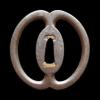
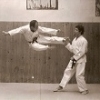
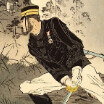








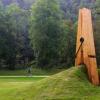

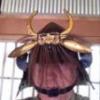





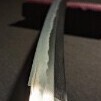






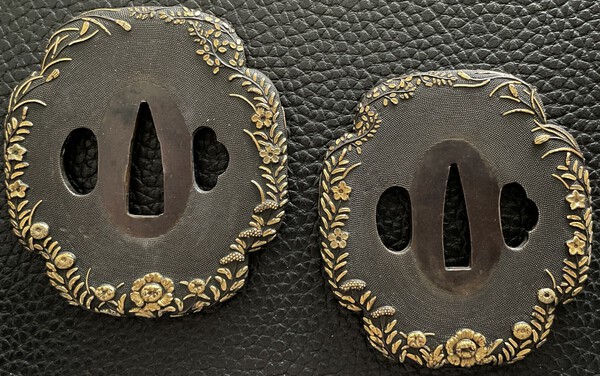










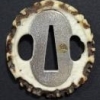

.thumb.jpg.2029d6650510f63ed397fc9b9b98c05e.jpg)









